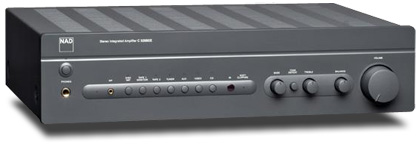October 1, 2009An Open Letter to a
Tweakaholic
 This is an intervention. Coming from
me, I know it’s pure hypocrisy, but it’s my earnest hope that you can learn from
my experience. No, I’m not being paternalistic; I just want you to realize what
you’re doing. I want you to see that there’s another way -- that you don’t
have to keep living like this. All I ask is that you listen. This is an intervention. Coming from
me, I know it’s pure hypocrisy, but it’s my earnest hope that you can learn from
my experience. No, I’m not being paternalistic; I just want you to realize what
you’re doing. I want you to see that there’s another way -- that you don’t
have to keep living like this. All I ask is that you listen.
My obsession with tweaks began with my first
"real" audio amp, an NAD C 325BEE. Its rear panel had Main Out and Pre In jacks,
and it came with cheap nickel-plated jumpers to bridge the gap and make it an integrated
amp. It took little time for me to go online and learn that the stock jumpers had to go --
they were pure audio poison. After much consideration, I decided to make my own jumpers,
following a recipe I found through the aptly named Audio Asylum. That was my first fix. It
wouldn’t be my last.
I began to read a lot about electrical noise and decided
not only that my system had some, but that I had to be rid of it, else I’d never know
how pure music was supposed to sound. Some people wrote that they’d had great success
installing a certain brand of capacitor across the mains electrical input of their CD
players, so despite the fact that I had no idea what I was doing, I opened up my player
and installed some capacitors. Amazingly, I got it right. Nothing blew up.
While inside the player, I thought I might as well make
sure that no stray resonances were affecting the sound. First, I used rope caulk -- on
everything. Then I learned that Blu-Tack was way more audio-approved, so I got some of
that. Sure, it was about ten times more expensive, but this was for audio, man.
You’ve got to be willing to spend what it takes to achieve perfection.
What followed was an accelerating downward spiral of
footers (rubber, mystery material, aluminum, brass, ceramic, a combination of some of
these, etc.), capacitors, resistors, power cables, and filters. Then I started going for
the hardcore stuff: cable lifters, dispersion rings, and highly technical "resonance
control devices." In my heart, I knew the one inescapable truth in all of this: my
system didn’t sound much better. But I couldn’t stop.
I blame myself for getting you started. Heaven forgive me,
I even sold you your first pair of cables. I had no idea where things were headed, or the
extremes you’d go to. There were warning signs, sure, but I was so out of my mind
that I missed them, or just didn’t see anything wrong. Soon, you were having a rack
custom built. You spent a king’s ransom on RCA plugs. And the power filters and
cables! How many did you try? Soon, it was apparent to you that something was
"wrong" with your system, but you didn’t know what it was or how to fix it.
I saw what was happening but I was too weak to stop it.
Now look at you. It used to be about the music, man,
but now it’s about . . . what? Clarity? Microscopic detail? Do you even
hear the notes anymore, or just the way they decay in a vast expanse of blackness?
I care about you and I want you to stop. It became
shockingly clear to me that you’d gone over the edge when you told me about the
Teflon tape. "You’ve got to try it -- it’s an amazing tweak!" you told
me. "Just wrap a 3" length around each prong of your power cables. Sound
tightens up, and even plasma TV pictures get better!"
"But how could that be? Teflon is an insulator, and
would greatly reduce the connector’s contact area if it’s wrapped up."
You told me that, when plugged in, the Teflon moves to the
base of the prongs.
"What possible effect could that have?"
"I dunno, maybe it’s killing vibrations or
something."
Oh no no no no no. What have I done to you?
You’re sick, my friend, but you’re going to get
better. I know that somewhere, deep inside, you still love the music, and you know it
doesn’t matter if you can count Pavarotti’s nose hairs when he exhales. You know
that there’s such a thing as too much clarity, too much detail -- that
it’s not about the recording space, but the music that was made there.
You can beat this. You’ve proven that you can put
together a great system -- now, prove that it can stand on its own, without all the
"help" you’re giving it. Walk away from the hocus-pocus, man. Trust the
engineers who designed your gear to sound great as is, without bells, whistles,
magic alarm clocks, and antigravity boots.
It’s all about faith, and just saying "no."
. . . Colin Smith
editor@goodsound.com
|















